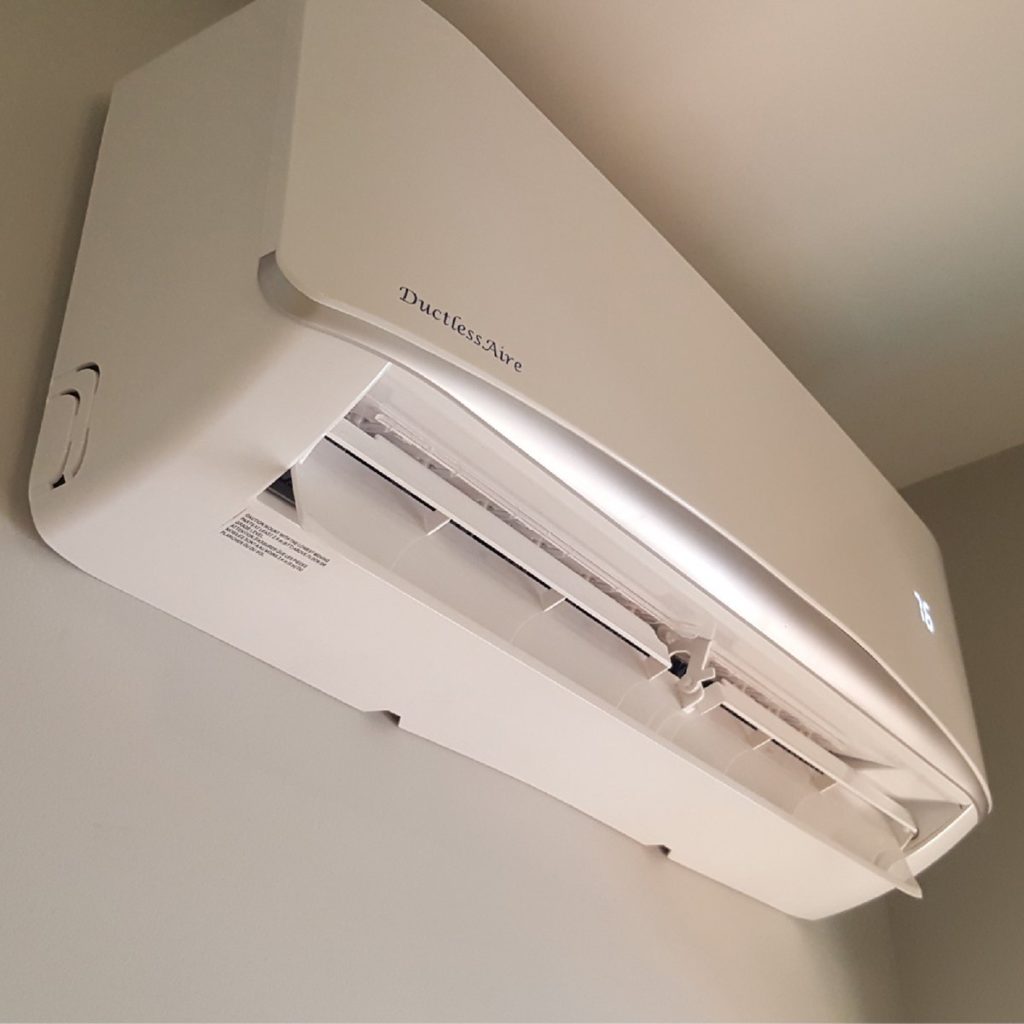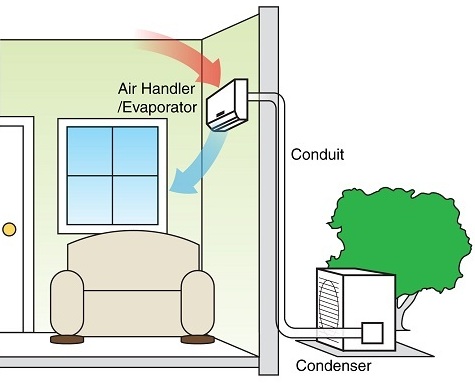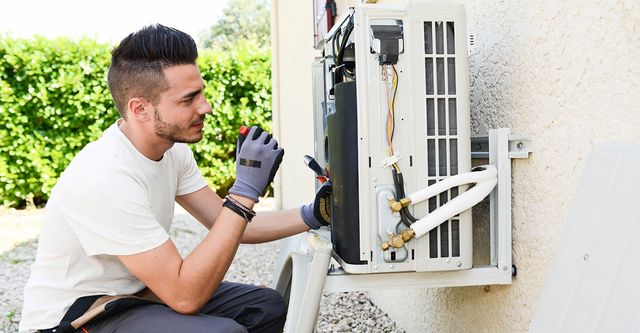Did you understand that 85% of all cooling concerns can be fixed without the requirement for specialist assistance? When your air conditioner starts breaking down, understanding where to start troubleshooting is crucial.
From odd noises to cozy air burning out, these problems can be frustrating. However anxiety not, just like a couple of simple actions, you might be able to diagnose and deal with the problem on your own.
So, before you think about calling a technician, allow's check out some common a/c problems and exactly how you can tackle them head-on.
Secret Takeaways
- Address unusual sounds promptly to prevent further damage.
- Guarantee appropriate airflow by cleansing filters and unblocking vents.
- Inspect cooling agent degrees and tidy parts for optimal cooling.
- Consistently maintain and clean up the AC to stop leakages and malfunctions.
Unusual Sounds
If your air conditioning unit is making strange noises, do not overlook them as they could show a possible problem. One common resource of these sounds could be compressor issues. A loud banging or clanking audio might suggest that there are problems with the compressor, which is an essential component in charge of circulating refrigerant. Neglecting this could cause further damages and a potential breakdown of the system.
An additional feasible source of uncommon noises can be follower problems. If you hear shrilling or squealing noises coming from your air conditioning unit, it might aim towards problems with the fan motor or blades. The follower plays an essential function in guaranteeing correct airflow and air flow within the system, so attending to any kind of fan-related sounds immediately is necessary to prevent any type of disruptions in cooling efficiency.
Weak Air movement
Experiencing weak air flow from your a/c device can be a sign of underlying problems that require to be dealt with promptly. 2 usual wrongdoers for this issue are a filthy filter and blocked vents. A dirty filter limits the airflow by capturing dust and debris, making it harder for air to pass through. This can lead to decreased airflow and a worn system. To fix this, find the air filter in your system and either clean or replace it according to the supplier's suggestions.
Obstructed vents can also prevent air movement. Check all the vents in your home to assure they're open and unhampered. Often furnishings or products put near vents can accidentally block the airflow. By reorganizing any obstructions, you can aid improve the blood circulation of awesome air throughout your room. If these steps don't boost the air movement, it might be time to contact a professional technician to evaluate your air conditioning system even more.
Warm Air Blowing
When cozy air is blowing from your cooling device, it might suggest a possible problem that requires troubleshooting. Here are some key areas to inspect:
- Thermostat settings: Make sure that your thermostat is readied to the right temperature and cooling setting. Sometimes, a straightforward change to the settings can fix the concern of warm air blowing from the air conditioning unit. air conditioner near me
- Refrigerant degrees: Low refrigerant degrees can create the air conditioning system to blow warm air. If you believe this is the issue, it's ideal to call an expert HVAC technician to examine and refill the cooling agent as required.
- Air filter and condenser coils: A stopped up air filter or unclean condenser coils can restrict airflow and prevent the air conditioning process, leading to warm air being burnt out. On a regular basis inspect and replace the air filter as needed, and make certain the condenser coils are tidy and free from particles to help preserve peak cooling efficiency.
Leaking or Dripping Water
Look for water leakages or trickling from your air conditioning device to determine prospective concerns that need focus. Dripping water can be an indicator of problems such as condensation accumulation or a clogged up drainpipe.
Condensation build-up occurs when warm air overlooks the chilly evaporator coils within your air conditioner unit. This process creates dampness in the air to condense into water droplets. Typically, this water is gathered and receded correctly. Nevertheless, if you notice water leaking from your system, it could indicate a clog in the water drainage system.
A blocked drain is a common concern that can lead to water leak. With time, dust, dust, and algae can accumulate in the drain line, causing a blockage. This clog protects against water from being correctly drained, causing leaks or drips from the system.
To attend to these concerns, you can try getting rid of the drain line using a wet-dry vacuum or a combination of bleach and water to eliminate any kind of obstructions. Normal upkeep and cleansing can aid protect against condensation build-up and clogged up drains, keeping your AC device running efficiently.
Air conditioner Not Activating
If your a/c device isn't activating, first inspect the power source and thermostat settings to troubleshoot the problem.

- Source of power: Ensure that the a/c is plugged in effectively and that the outlet is functioning. Often a stumbled breaker or a blown fuse could be the reason for a lack of power to the air conditioner device.
- Thermostat Setups: Evaluate the thermostat to ensure it's set to a temperature listed below the current area temperature level. If the thermostat is battery-operated, replace the batteries to see if that fixes the issue.
- Air Filter: A filthy air filter can limit airflow and trigger the air conditioner system to shut down. Examine the air filter and change it if it appears clogged up or filthy.

Frequently Asked Concerns
How Can I Improve the General Efficiency of My Air Conditioning Device?
To improve your air conditioning device's performance, start by getting duct cleansing done consistently. This helps secure optimal air movement.
Next off, perform an insulation check to avoid any type of air leakages that could make your system work harder.
These simple steps can make a large distinction in exactly how well your air conditioner system operates, keeping you awesome and conserving you money on power costs.
What Are Some Usual Upkeep Tasks I Can Carry Out to Maintain My Air Conditioning Running Smoothly?
To maintain your a/c running efficiently, make certain to cleanse the coils frequently and inspect the refrigerant levels. These tasks are vital for maintaining the performance of your system.
By cleaning the coils, you ensure correct air movement and cooling. Keeping track of refrigerant degrees helps protect against issues like getting too hot.
Normal upkeep similar to this will certainly keep your air conditioning system working properly and prolong its life expectancy.
Are There Any Type Of Safety and security Tips I Should Know When Fixing My A/c Device?
When fixing your cooling device, bear in mind to prioritize electric safety and security to avoid crashes.
Always turn off power before working with your cooling and heating system.
Beware of refrigerant leaks, as they can be damaging.
Routine HVAC examinations and condenser cleansing can assist keep your device and avoid safety and security dangers.
Keep vigilant and follow safety and security guidelines to guarantee a smooth troubleshooting process and a well-functioning air conditioning system.
Exactly how Frequently Should I Change the Air Filters in My Air Conditioner Unit?
You need to replace the air filters in your air conditioner unit every 1 to 3 months for leading performance.
The frequency of filter substitute depends on elements like the type of filter you utilize and exactly how commonly you run your air conditioner.
High-efficiency filters might need changing less typically, while fundamental filters should be replaced much more regularly to keep your device running smoothly.
Normal filter changes guarantee reliable air flow and better air top quality in your house.
Can I Set Up a Programmable Thermostat to Assist Manage the Temperature in My Home More Effectively?
Yes, you can set up a programmable thermostat to help manage your home's temperature level more effectively. By setting particular temperature levels for various times of the day, you can achieve energy cost savings.
To set up, see to it to switch off power, label cables, install the new thermostat, attach the cords, and program it according to your routine.
Delight in much better temperature level control and potential power savings with a programmable thermostat.
Final thought
To wrap up, repairing common a/c problems doesn't have to be a challenging task. By following these easy do it yourself actions, you can quickly attend to troubles like:
- uncommon sounds,
- weak air flow,
- cozy air blowing,
- dripping water,

- a system that won't activate.
Remember to always prioritize security and consult a professional if needed.
With a little persistence and know-how, you can keep your a/c running efficiently and your home cool and comfortable.
